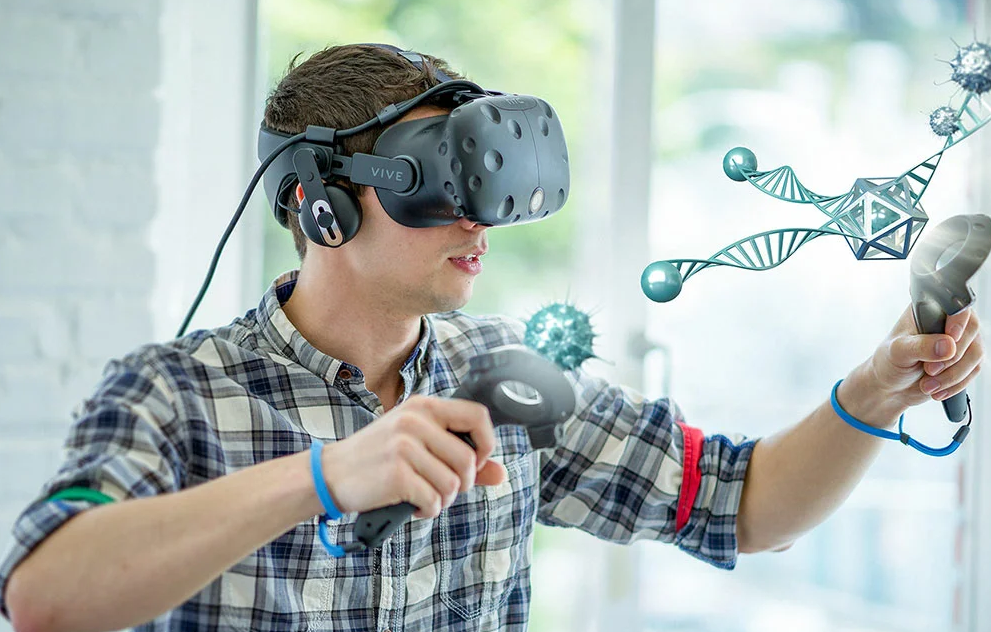Introduction
In recent years, technology has dramatically evolved, bringing immersive experiences through VR virtual and augmented reality. Google, like other tech giants, jumped into the virtual reality (VR) space early on, launching various products and initiatives aimed at bringing VR to the mainstream. However, Google has gradually shifted its focus, pivoting from VR to the more accessible and practical augmented reality (AR). This article explores why Google has chosen to focus on AR, how it differs from VR, and what this means for the future of technology.
The Rise of Virtual Reality (VR)
Virtual reality was once hailed as the future of immersive experiences. VR allows users to enter a fully simulated environment, offering highly immersive, 360-degree experiences. Google’s initial foray into VR came with products like Google Cardboard, an affordable headset that allowed users to experience VR with just a smartphone. This was followed by Google Daydream, a more sophisticated headset aimed at making VR more mainstream.

Why Google Was Interested in VR
Google’s early interest in VR stemmed from the promise of immersive media and the opportunity to create new forms of entertainment and education. With competitors like Facebook (now Meta) investing heavily in VR with products like Oculus, Google aimed to carve out its own niche in the VR market. VR was seen as a tool to revolutionize gaming, learning, and even how we interact with digital content.
The Limitations of Virtual Reality
However, despite its initial hype, VR faced significant challenges. The hardware required for a truly immersive VR experience remained expensive and bulky. Headsets like Google Daydream were seen as steps in the right direction but couldn’t overcome these limitations. Additionally, there was a lack of widespread consumer interest. While VR found niches in gaming and some professional industries, it never achieved the broad, mainstream adoption many had hoped for.
Introduction to Augmented Reality (AR)
As Google began to realize the limitations of VR, the company turned its attention to augmented reality (AR). Unlike VR, which immerses users in an entirely digital world, AR overlays digital elements onto the real world. A good example of AR in action is Google Lens, which allows users to point their camera at objects and receive relevant information directly on their screen.

Why Google is Shifting Focus to AR
The shift toward AR represents a broader vision for Google. AR’s potential lies in its practical applications. From enhancing navigation with AR-powered Google Maps to allowing users to search for information visually with Google Lens, AR is seamlessly integrated into our everyday devices, primarily smartphones. This is in stark contrast to VR, which often requires special hardware and immersive setups that don’t blend as easily into daily routines.
Google’s Major AR Projects
Google has been working on several key AR initiatives. Google Lens, for instance, is a powerful tool that brings visual search capabilities to smartphones. Another key project is ARCore, Google’s development platform for building AR experiences on Android. Additionally, Google Maps AR helps users navigate their surroundings by overlaying directional arrows and information onto the real world through their phone’s camera.
Comparison Between Google’s VR and AR Efforts
When comparing Google’s VR efforts with its AR initiatives, it’s clear that AR has gained more traction. While products like Google Daydream have faded into obscurity, AR projects like Google Lens continue to evolve and find new use cases. AR offers a more accessible and intuitive experience than VR, making it easier to integrate into existing devices like smartphones.
AR’s Edge Over VR
The primary advantage AR has over VR is its accessibility. Most people already own a smartphone capable of AR, while VR requires dedicated hardware. AR also enhances real-world experiences rather than replacing them, making it more useful for everyday tasks. For instance, AR can help users navigate, identify objects, or even translate text in real-time, blending the digital world with the physical one in a way that VR struggles to match.
The Broader Trend Toward AR in the Tech Industry
Google isn’t the only company making this shift. Tech giants like Apple and Microsoft are heavily investing in AR, with products like Apple’s ARKit and Microsoft HoloLens leading the charge. The tech industry sees AR as a more practical and accessible solution for enhancing user experiences, and consumer trends are following suit. More users are interacting with AR every day, whether through social media filters, mobile apps, or other AR-powered tools.
Google’s Future in AR
Looking ahead, Google’s AR ambitions are vast. While the company has focused heavily on software and development platforms like ARCore, there’s speculation that Google could release new AR hardware, potentially rivaling products like the Apple Vision Pro. Google’s vision for AR goes beyond simple smartphone apps, aiming to create tools that could redefine how we interact with the digital world.
The Impact of AR on Everyday Life
AR is poised to change the way we live, work, and play. From helping students visualize complex concepts in real-time to enhancing healthcare with AR-powered surgeries, the possibilities are endless. In entertainment, AR could provide interactive experiences that are more immersive and dynamic than traditional media. As AR technology continues to evolve, it will become an integral part of everyday life.
Challenges Ahead for Google in the AR Space
Despite its potential, AR comes with its own set of challenges. Google will face stiff competition from other tech companies like Apple and Microsoft, who are also heavily invested in AR technology. Additionally, there are technical challenges in making AR more accurate and useful, as well as ethical considerations around privacy and data usage.
Conclusion
In conclusion, Google’s pivot from VR to AR is a strategic move that reflects the broader trends in the tech industry. While VR promised immersive experiences, AR’s accessibility and practicality have given it an edge. Google’s investments in AR, from Google Lens to ARCore, highlight the company’s vision for a future where digital information seamlessly integrates with the real world. As AR technology continues to improve, we can expect it to become an essential part of our daily lives.

